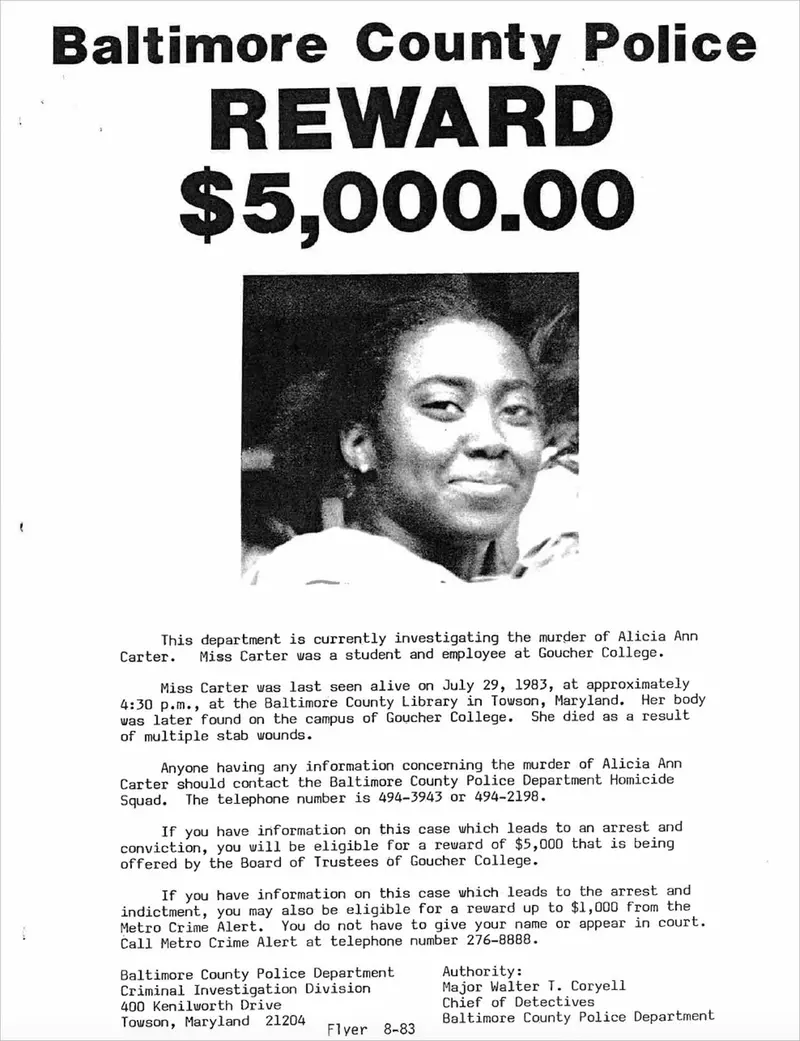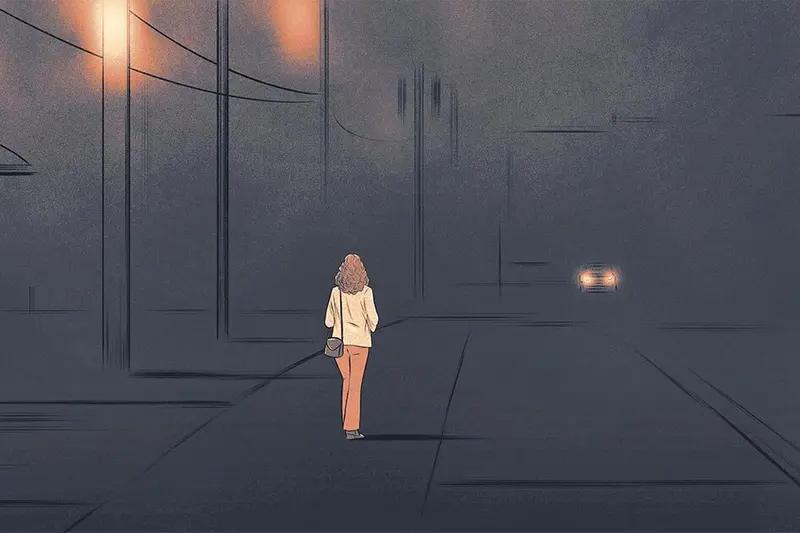Hi everyone,
I had intended to write this dispatch about the survivors I met while investigating DNA evidence that had gone untested for decades in Baltimore. A few of their cases were solved through unbelievable twists of fate. For many others, their cases are still open and they’re actively searching for answers.
But then last week I learned of a major development that underscores one of the main takeaways from the series: Investigating rapes can help solve other crimes.
Now, the Baltimore County Police Department says that Alphonso Hill, the serial perpetrator police had connected to nearly a dozen rapes via DNA evidence after a detective saw him in a “48 Hours” episode and noticed his resemblance to a police sketch, has just confessed to raping and murdering a 21-year-old college student in 1983. He has also apparently confessed to other crimes, including other rapes.
While reporting the Cold Justice series, I tried to interview Hill, but he declined. I attempted again this week after reading the police summary of his recorded confession and the related police report, but the Maryland Department of Public Safety and Correctional Services declined access due to COVID-19 restrictions.
Many detectives in Baltimore believed he was already the most prolific serial rapist in the state. Now he is also a confessed murderer. And there could be more cases to come.
“I thought I knew the extent of violence of this man when we got nine rape convictions,” said Scott Shellenberger, the Baltimore County state’s attorney. “Now it seems we’re not even close.”
Alicia Ann Carter was entering her senior year, an economics major and president-elect of a campus Christian group. She loved to play tennis, she was close to her three brothers and sister, and she called her mother every week. She was last seen at 4:30 p.m. on July 29, 1983, at the Baltimore County Public Library in Towson. She was found stabbed to death five days later in woods on the Goucher College campus, where she worked and attended school.
Her older brothers, Alfred and Wendell Carter, describe her as “sweet, kind, gentle, capable, courageous, and someone you could always rely upon.”
Hill confessed to raping and murdering her after two Baltimore County police detectives interrogated him in May, informing him they had DNA evidence in the case and offering him immunity from prosecution in exchange for his confession.
Hill also confessed to several other crimes, including rapes, according to police, after he learned they had forensic evidence. Police said they are not able to share more detail because they are still notifying the victims.
In February, as I was reporting this series, I had requested Alicia Carter’s case file from police through Maryland’s open records act after I came across a 1983 Baltimore Sun story about her murder.
What I saw in the article made me gasp. I had spent a lot of time studying offenses linked to Hill by modus operandi, DNA or arrest. I built a timeline and a map of more than 35 crimes he was convicted of or suspected of and read through all of his arrest reports.
The 1983 story revealed that Carter’s body was found in the same wooded area of the Goucher campus where I knew Hill had raped another student in 1979. In 2008, Hill was convicted of a 1984 rape in woods less than two miles away on the same thoroughfare. After Baltimore County police tested several DNA slides preserved from decades-old rape examinations at a local hospital, he would be convicted or suspected of numerous other attacks against women in the area, including two on the Goucher campus in 1980 and 1982.
I had begun checking archived news articles for unsolved murders after an interview with a retired police officer who was on the force in 1983. He told me that he wondered at the time whether the same man raping women in nearby apartment complexes had also raped and murdered Carter. Nobody knew who the serial rapist was at the time. They wouldn’t find out for another quarter of a century.
Police ended up developing a major suspect in the weeks following Carter’s murder and sent a drawing of the suspect around to media, but the man looked nothing like Hill. The leads went nowhere, and the case eventually fizzled.

Although Hill had never been charged with murder, one notable aspect of his M.O. was his tendency to cluster crimes. For example, Hill raped three women in one apartment complex between October 1978 and January 1979. A similar cluster appeared at another apartment complex a decade later. The same could be said of Goucher College.
There was another detail in the article that screamed out to me.
Police never learned how Carter got from the library to the college campus. I knew Hill was a “hack,” or an unofficial taxi driver in the area. He could have offered her a ride. That is one way he stalked women, and it could explain why nobody saw her walking back to campus or home from the library.
Police denied my request for the Carter file when I made it in February, saying the case was still unsolved. I hit the same dead end with the medical examiner’s office. They would not release autopsies from open cases.
So I inquired with the police. Had they ever looked at Hill as a suspect in the Carter case? Her murder was not on a list I had seen before of crimes linked to Hill. I asked police whether there was still DNA from her case that could be tested, and whether they knew Hill was a hack who had raped women in and around campus.
In early June, more than three months after I requested the Carter case file, I was told that I could come in to read it. The case had just been closed.
I sat in the police headquarters law library and opened the hefty case file. I saw the Baltimore County state’s attorney’s letterhead with Alphonso Hill’s name on the front page.
Shellenberger explained that he had offered Hill immunity for the murder and other rapes he admitted to that day because Hill’s release date was already not until 2084 and it was unlikely he would ever set foot outside prison. He would be 95 by 2047, when he’d be up for parole, which Shellenberger said he would oppose.
“Closure was more important than a conviction, which will not really add any time,” Shellenberger said. “He’s going to be in jail for the rest of his life.”
Shellenberger added that knowing that the perpetrator is locked up is especially important for families’ and survivors’ sense of security. Wendell Carter, Alicia’s older brother, said that for years, he worried about the perpetrator finding and killing him as well. Now he knows that the man who killed his sister is behind bars.
According to his confession, Hill told police he had offered Carter a ride from the library. Carter fought him as he made advances in his car. He doesn’t remember what he did with the knife. He moved her body to a place he was familiar with on the Goucher campus.
As I looked through the Carter case file, it was clear how extensive and frustrating the police investigation had been.
They had multiple suspects and conducted hundreds of interviews. The Baltimore Colts (Maryland’s professional football team at the time) had been training on campus. Police checked their whereabouts, the whereabouts of those working with them and those of all of Carter’s acquaintances. Nothing panned out.
How many other victims could there be?
A historic trove of evidence at the Greater Baltimore Medical Center could yield more crucial clues. Several DNA slides from that collection, which was saved by Dr. Rudiger Breitenecker, had proved Hill was a serial rapist. Most of the slides from more than 2,200 rape examinations remain untested, though police said they intend to test and investigate everything.
However, that evidence does not include DNA from murder victims in unsolved cases.
Three months after Hill killed Carter, he raped Laura Neuman, the survivor featured in the “48 Hours” episode, in her apartment at gunpoint. She lived three miles away in the city. Police didn’t process a latent fingerprint obtained that night until nearly 20 years later. When they did, it matched Hill, who had continued to terrorize women across Baltimore.
Confronted with the evidence in 2002, Hill confessed and said at the time that it was an aberration. He had never done anything like it before or after. Neuman never believed him, and she later helped other survivors as they sought justice against him. Today, she said she is “completely sure” that there are other slides at GBMC that contain Hill’s DNA.
The Carter family is glad that the case was finally solved.
“I think we all had long given up any hope of her murder being solved,” said Alfred Carter. “I only wish our mother were still alive to hear.”
This is my last dispatch … for now. I will be following this story as police continue testing the evidence. Please don’t hesitate to reach out with any tips, questions or thoughts through ProPublica or directly to me through my Twitter account, @cdrentz.












